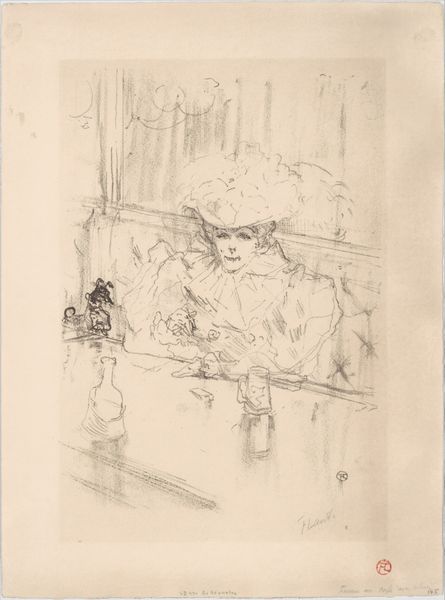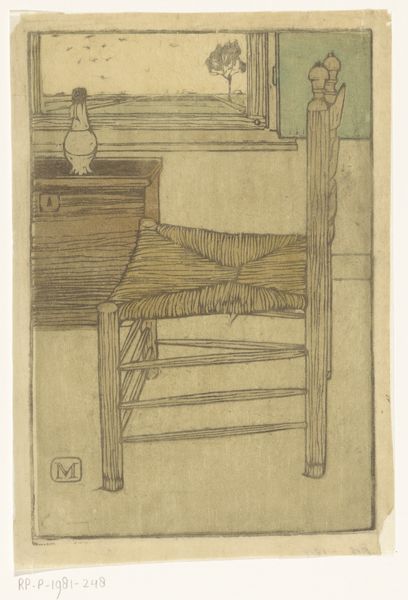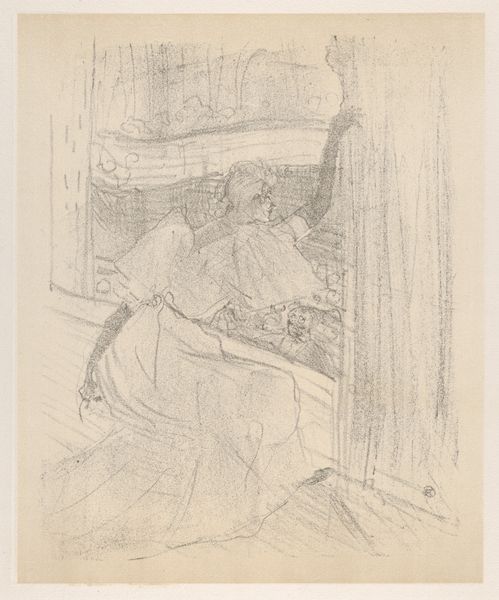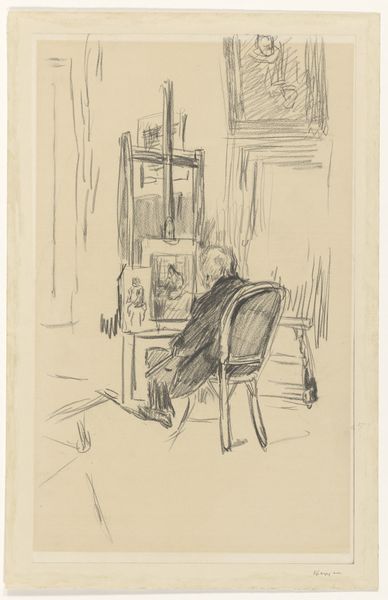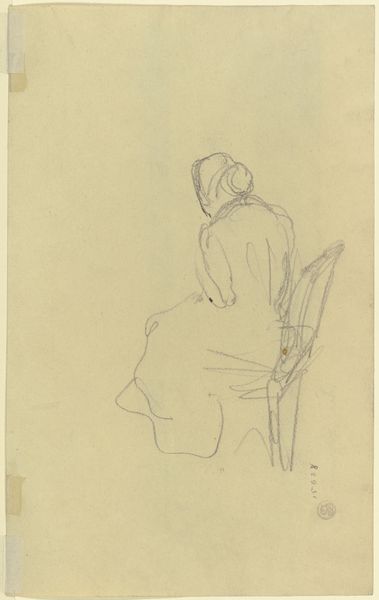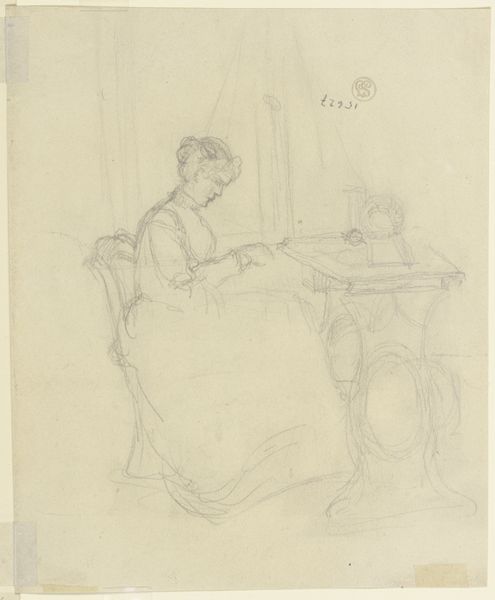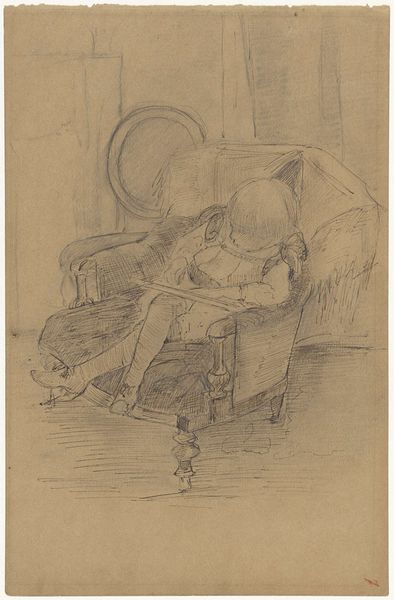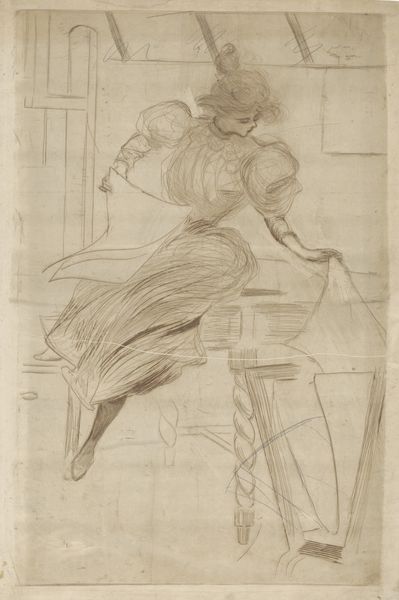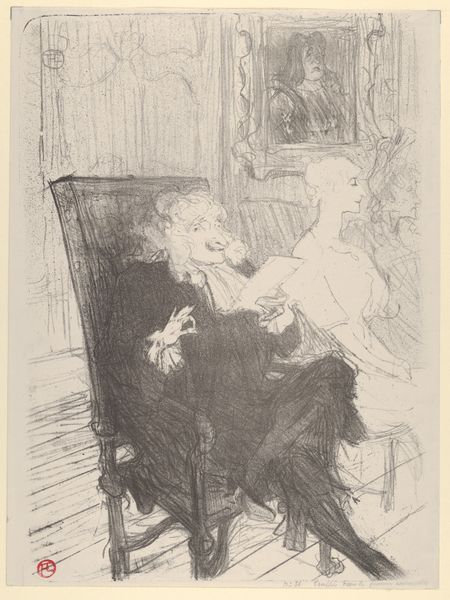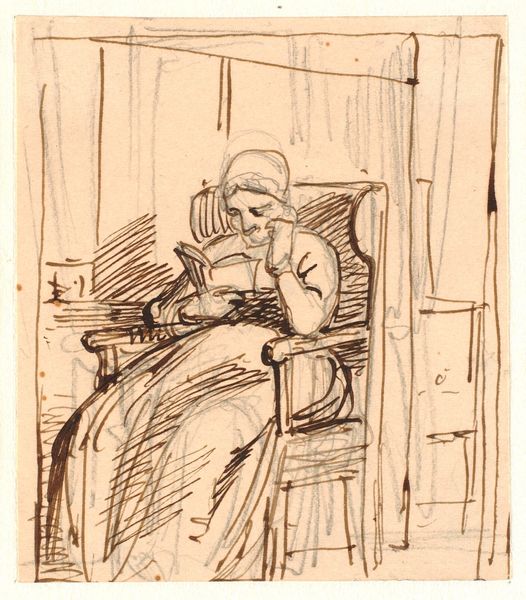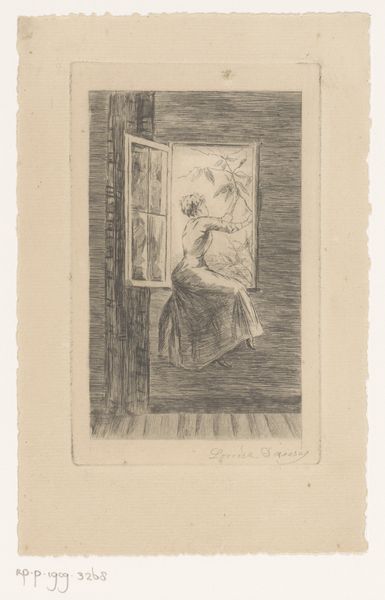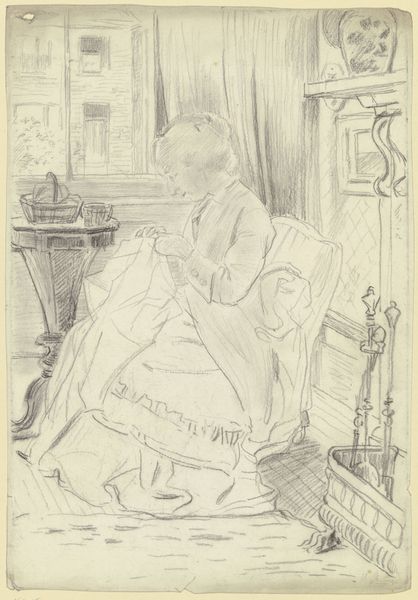
drawing, paper, pencil
#
drawing
#
16_19th-century
#
paper
#
german
#
geometric
#
pencil
#
realism
Copyright: Public Domain
Curator: This intriguing pencil drawing, currently held at the Städel Museum, is by Wilhelm Busch and is titled “Stuhl mit ornamentalem Schnitzwerk,” or “Chair with ornamental carving,” and was created around 1854. What's your immediate impression? Editor: A certain fragile elegance strikes me first. The delicacy of the pencil lines, the airy rendering – it captures the ornate detail without feeling heavy. It is all about shape and line. The eye dances across the details of the ornamental carving, observing their unique design. Curator: It’s interesting that you call it fragile, because Busch made this sketch during a period when he was wrestling with ideas of German national identity and the burgeoning industrial age. What do the curves and carvings suggest within the context of design and societal change? Was he, like William Morris a few years later, responding against the aesthetics of mass production? Editor: Perhaps. Certainly, there’s a pronounced emphasis on form, and what might be called the 'chair-ness' of the chair. Observe how Busch articulates the differing textures - from the plush seat to the rigid frame. The hatching and cross-hatching generate the depth of field on the cushioned areas. Semiotically, we can see a focus on the essence of 'chair'. Curator: Thinking about essence, consider that domestic objects like this chair weren't merely functional; they communicated status and taste. Who would have been sitting in this chair? Who was permitted such rest? Busch came from a middle-class background; the nuances of class are interesting when we try to locate the intersection between craft, labor, and leisure this drawing seems to inhabit. The deliberate ornamentation becomes a symbol in itself. Editor: That’s a fair assessment. To bring it back to pure aesthetics, there's a satisfying balance between the spare lines of the chair's structure and the voluptuous curves of the ornamentation. Also, the way the sketch presents supplementary isolated ornamental designs directs our eye to their aesthetic independence from the rest of the whole. It makes the geometry even more obvious. Curator: Absolutely. It highlights Busch’s skill but also prompts us to consider the broader social theatre in which such designs operate. A stage for silent narratives. Editor: An intriguing visual artifact. It shows the marriage between design, objecthood, and societal projection. Curator: Indeed, seeing an otherwise common object reframed by the socio-economic circumstances allows for many points of reflection on a daily basis.
Comments
No comments
Be the first to comment and join the conversation on the ultimate creative platform.
